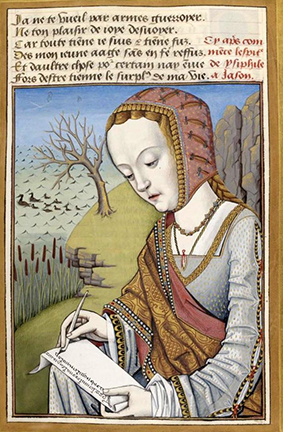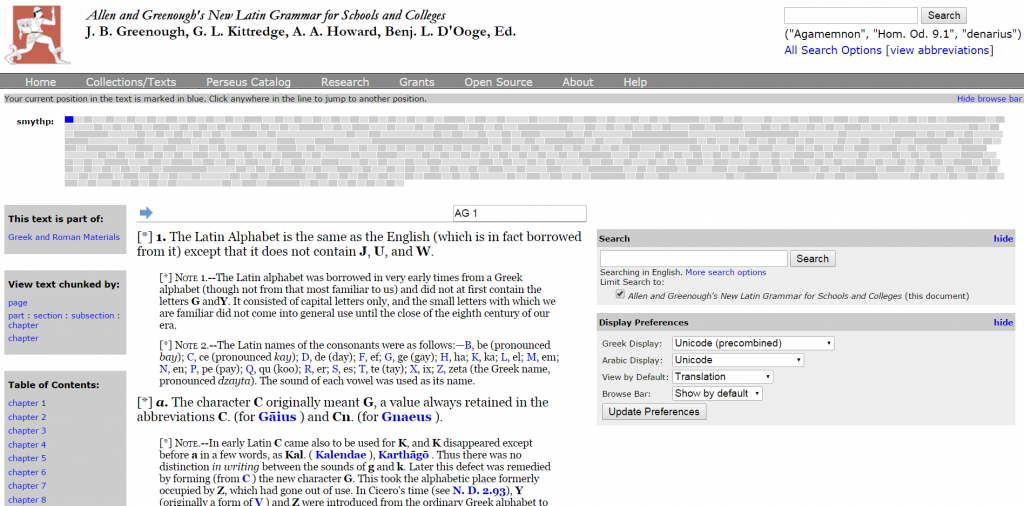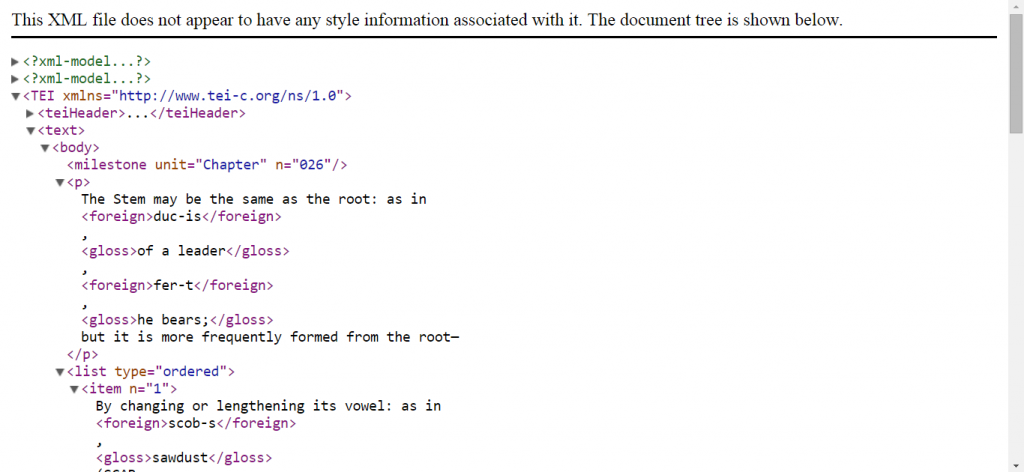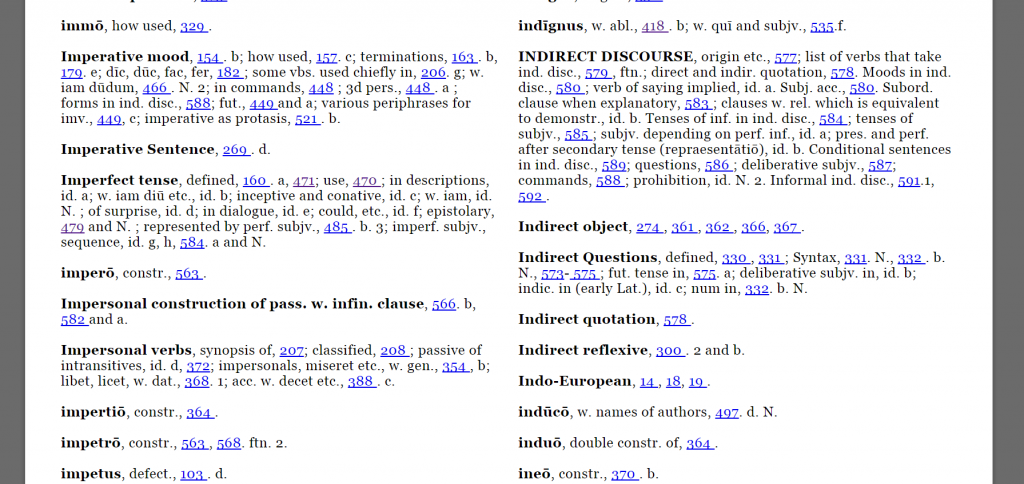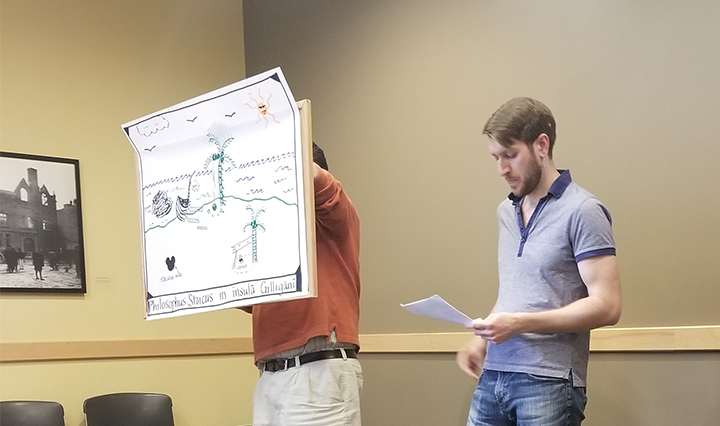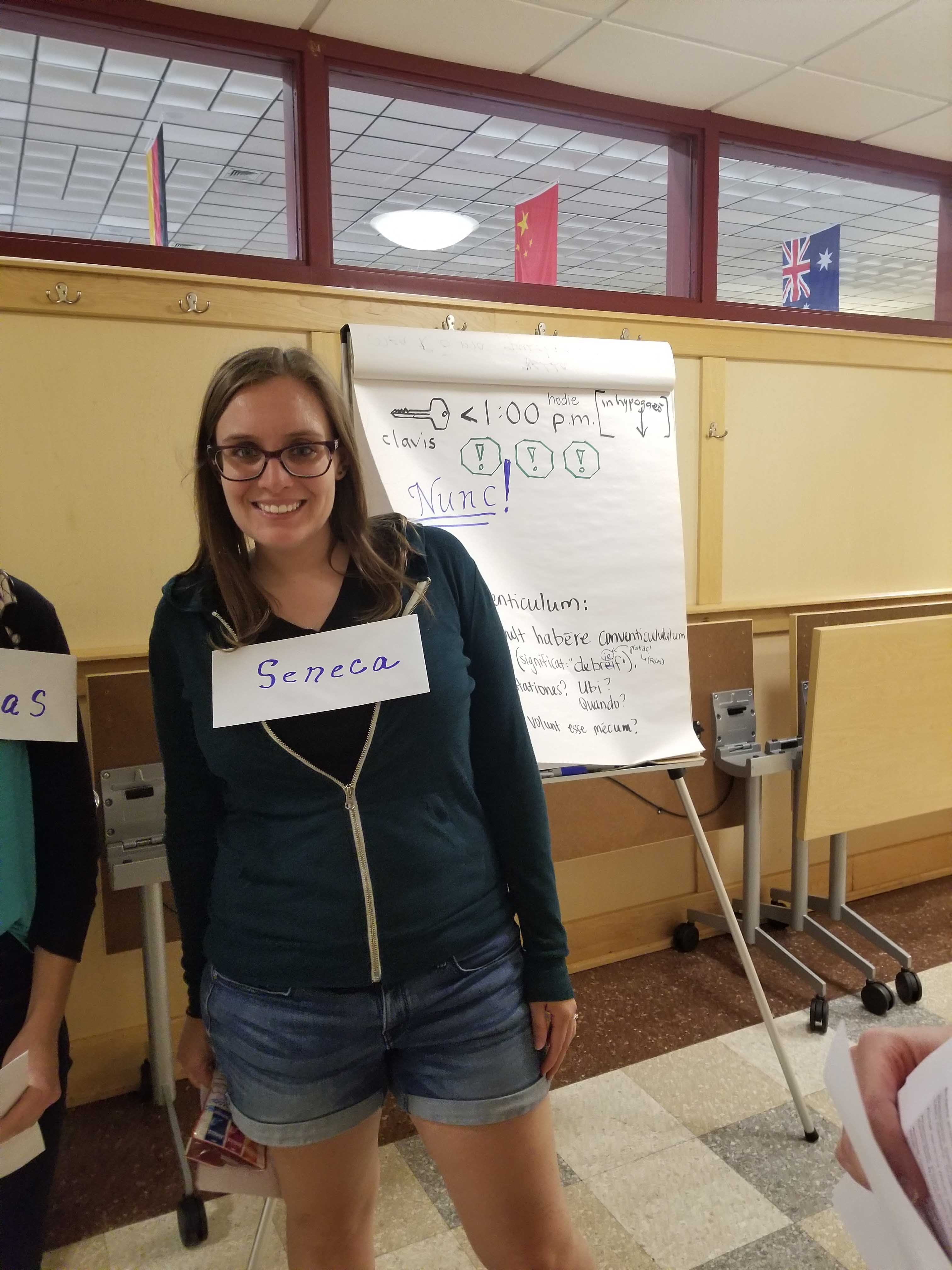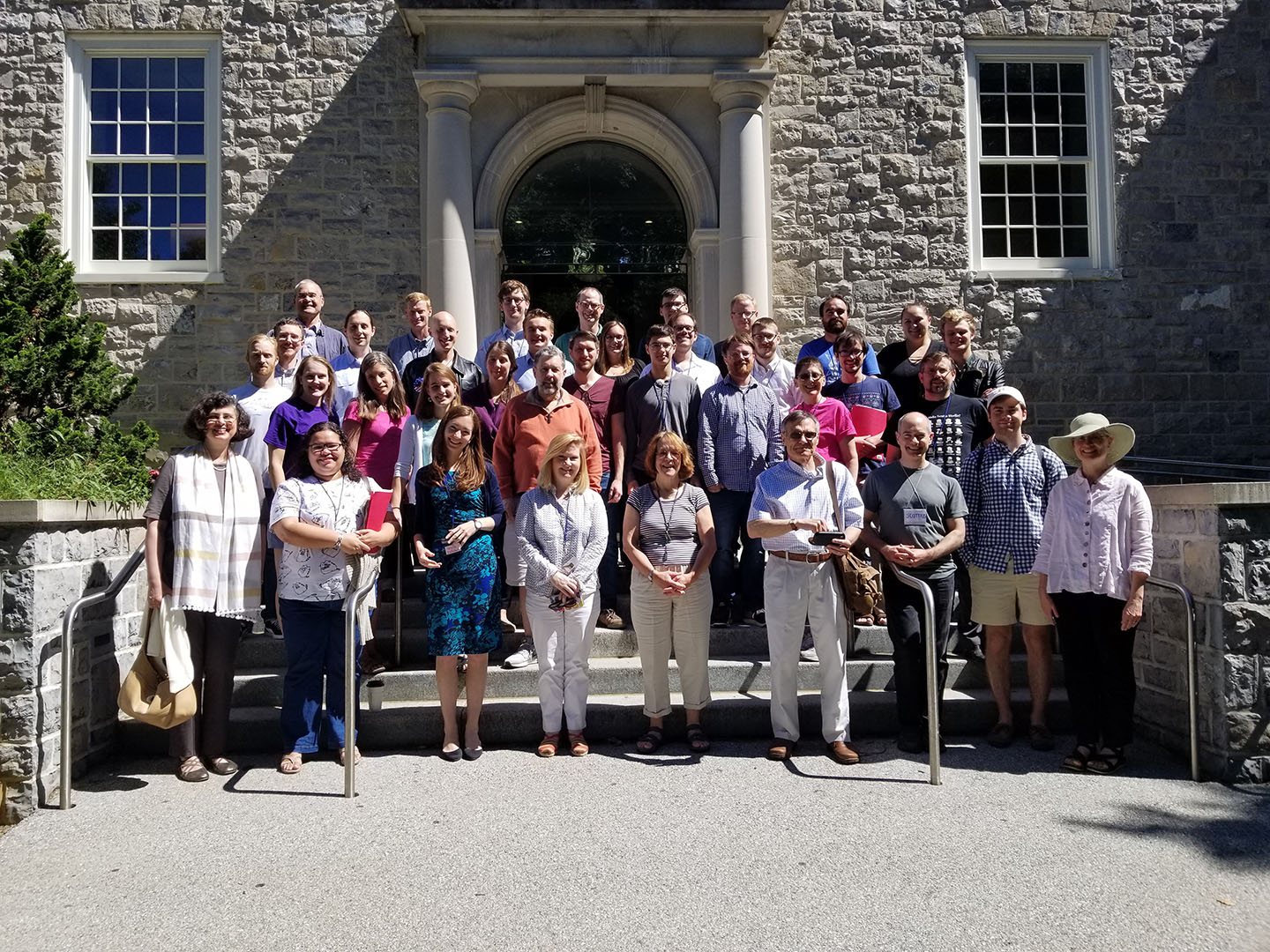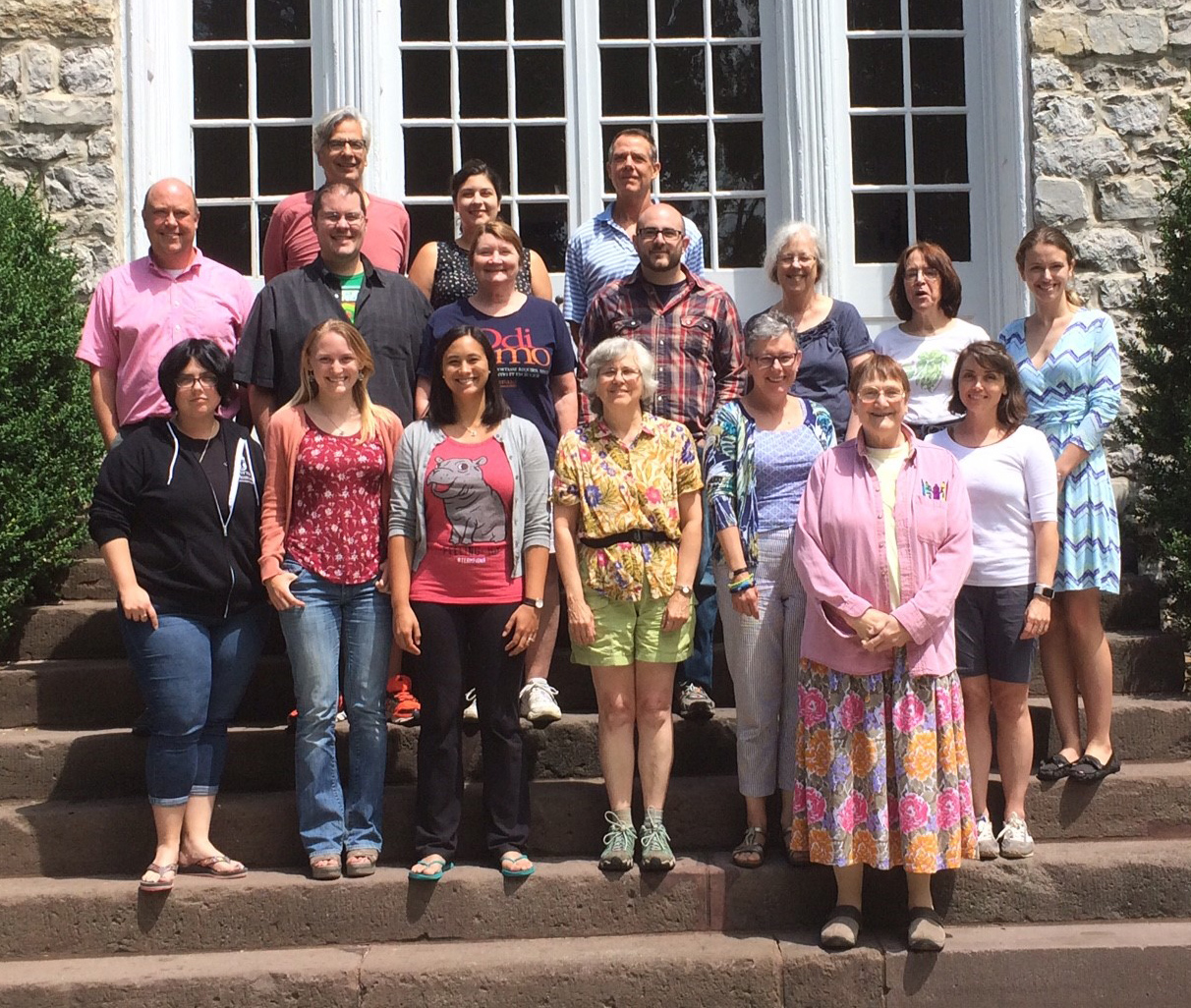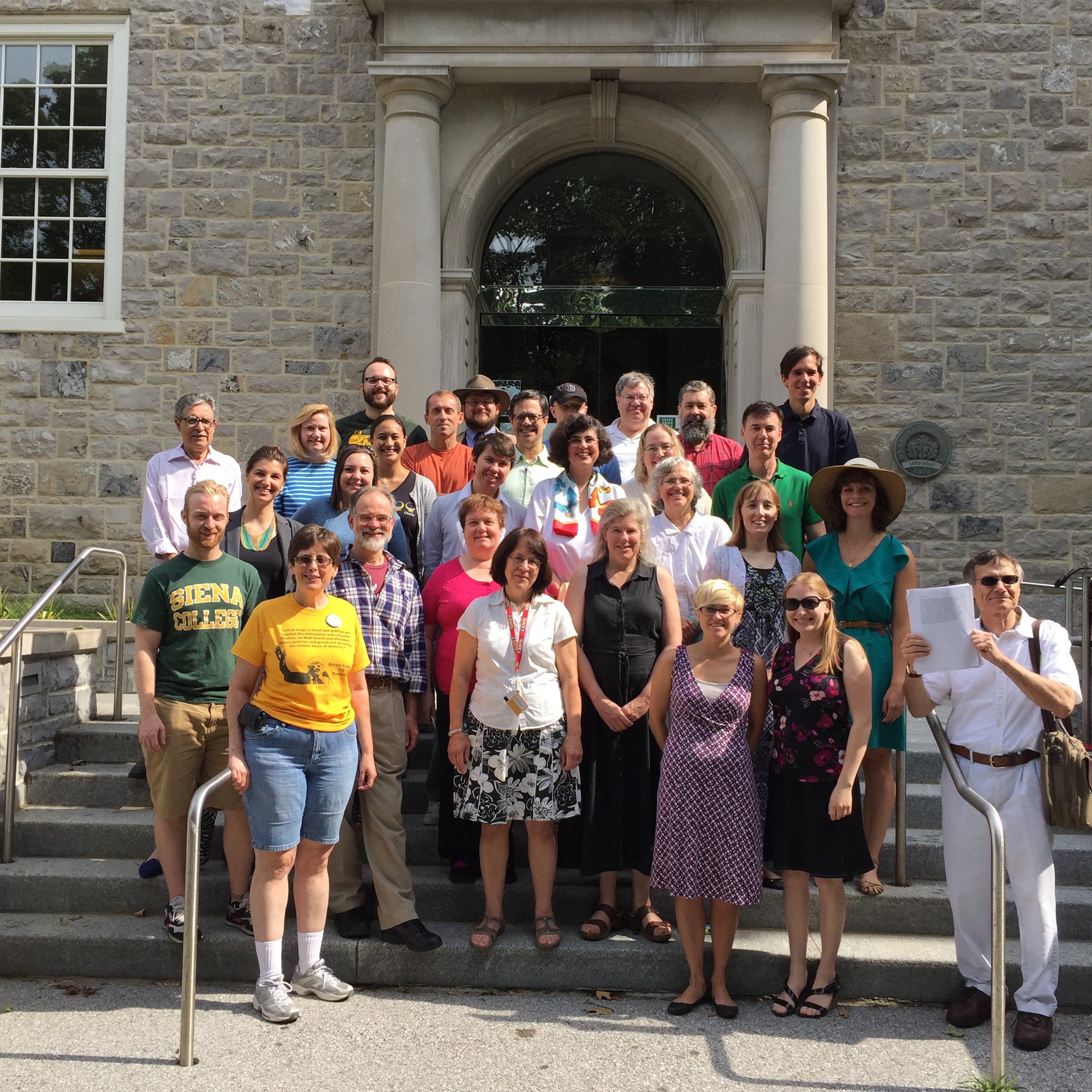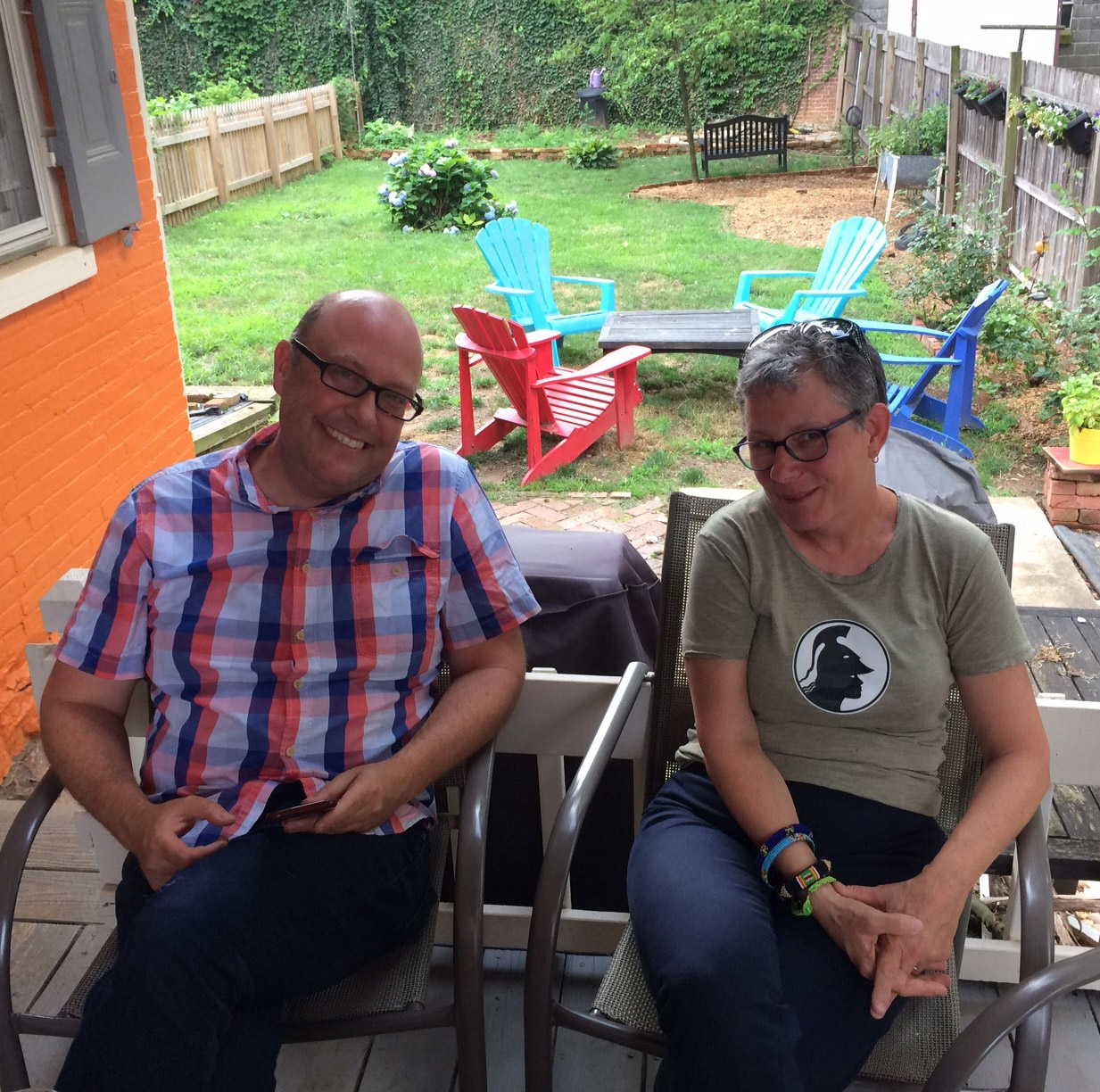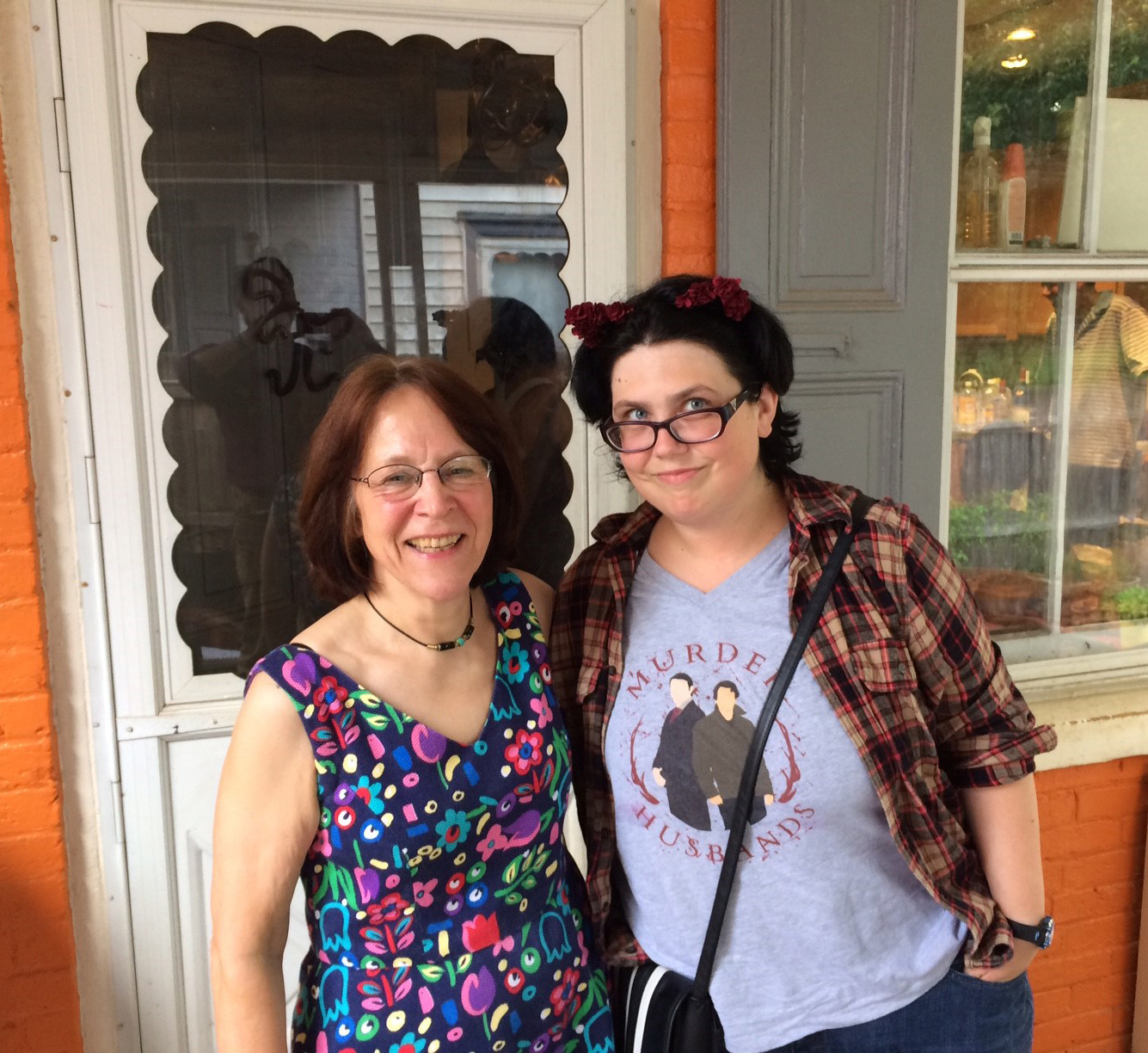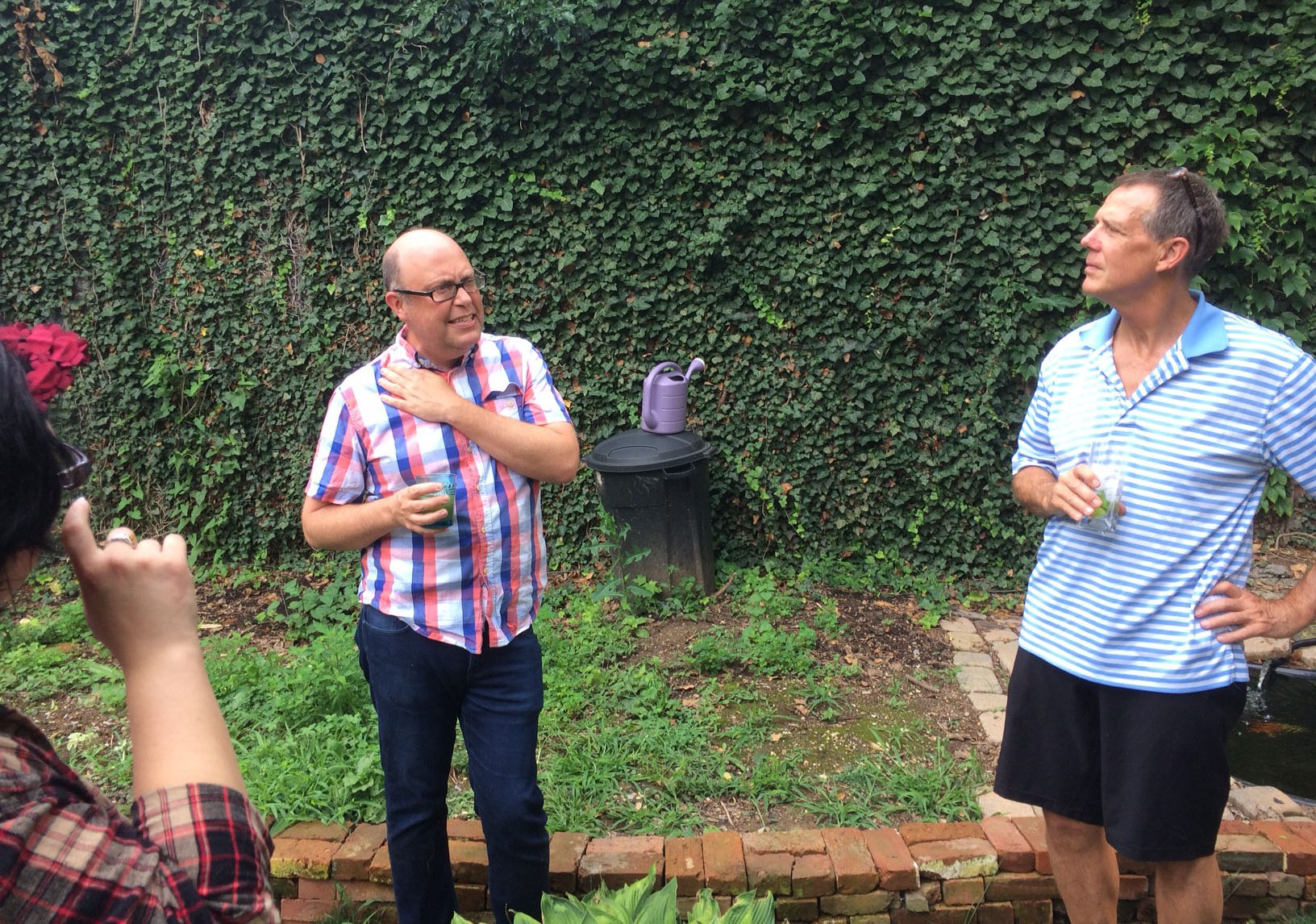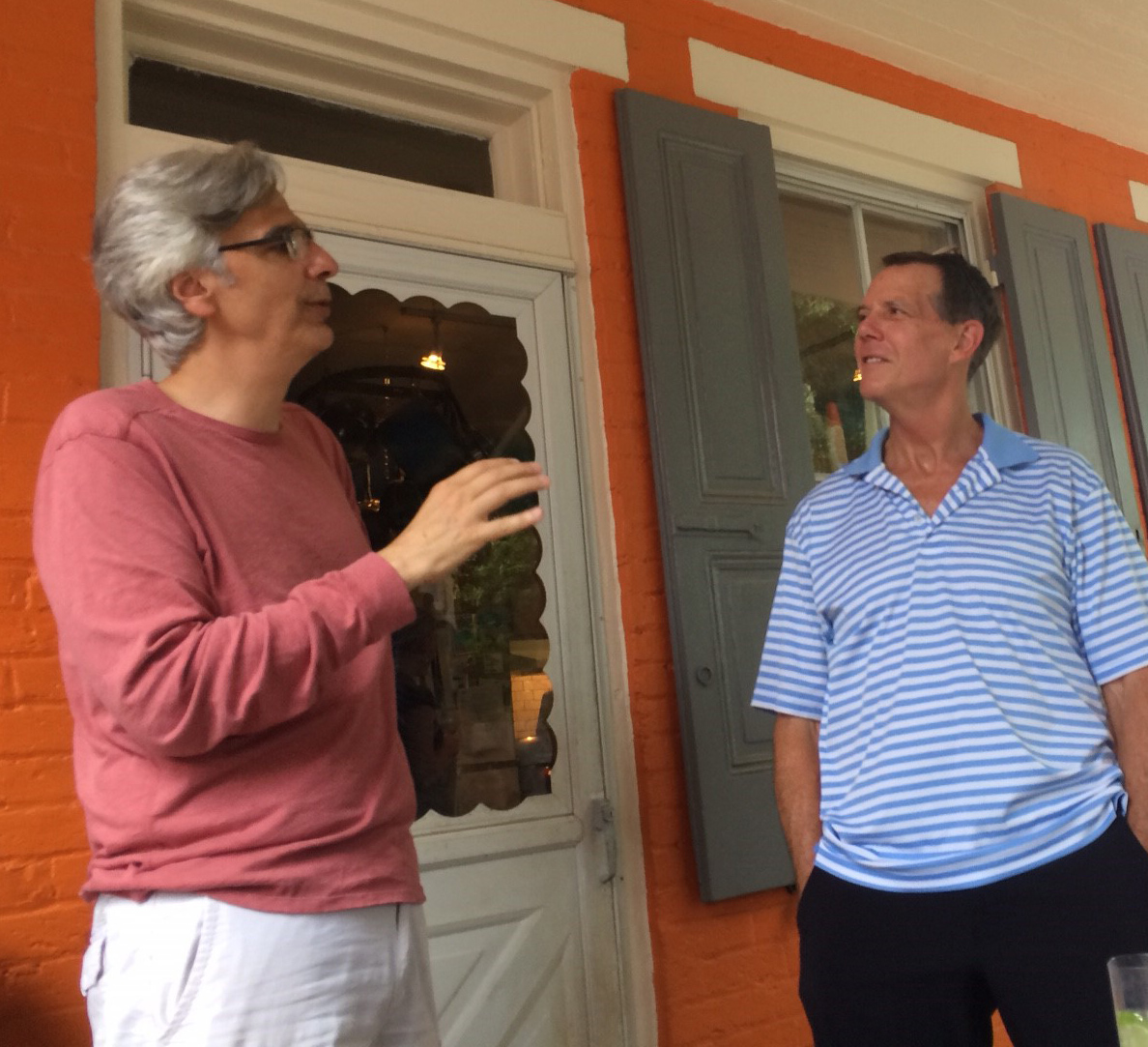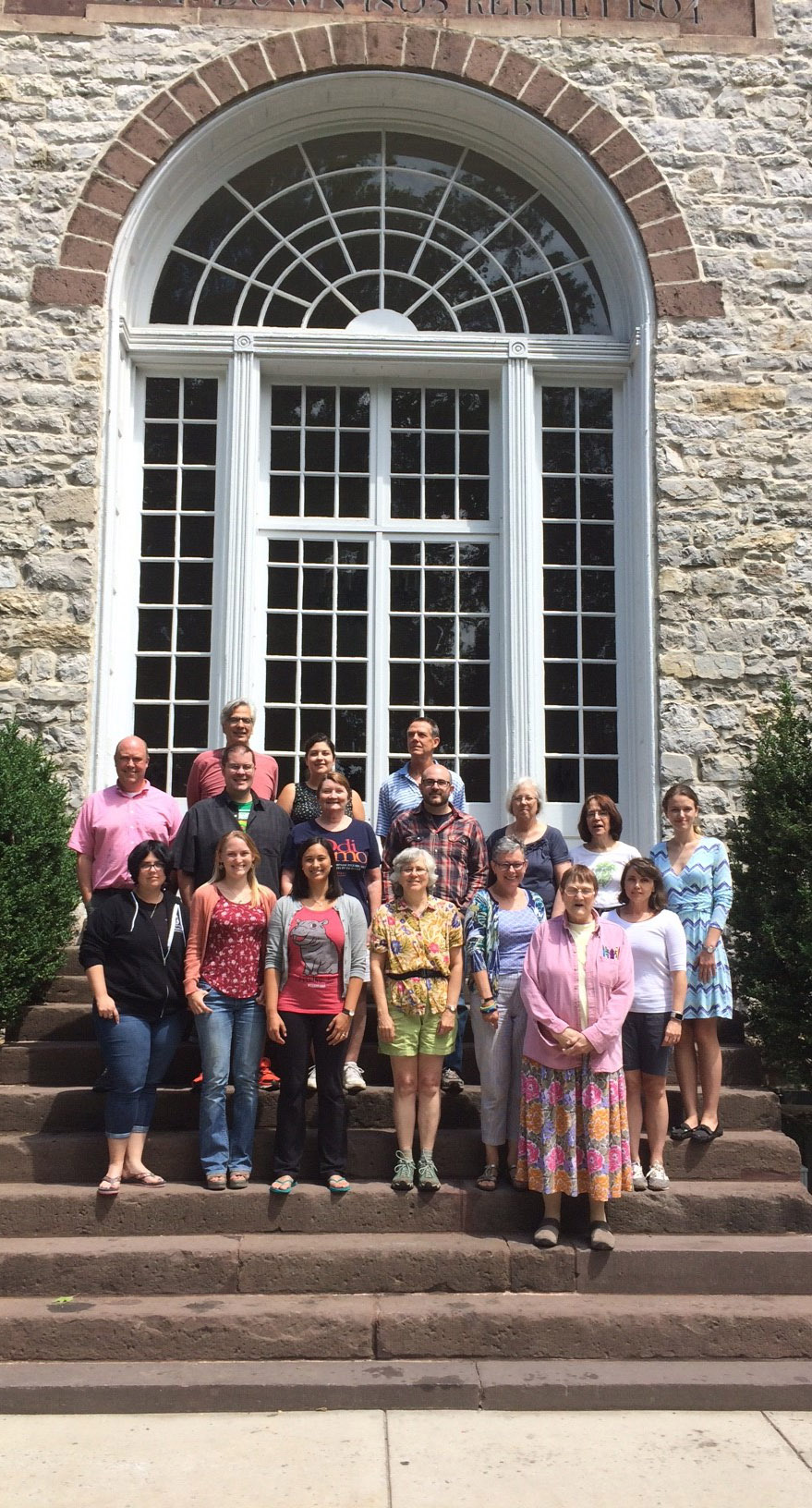I’ve been reading Ovid’s Metamorphoses with a third year college Latin class, and we are using Peter Jones’ commentary on selections from this work, published by Cambridge University Press in 2007. I wanted to take a minute to celebrate the virtues and pleasures of this book, as does Betty Rose Nagel in her enthusiastic BMCR review. What Rose Nagel couldn’t do is show the layout.
If you can take a minute to read the introductory paragraph, text, notes, and close readings for this short passage (pp. 33–34), it will be clear that this is philology of a very high order, but put at the service of the first-time reader of Ovid.


- Introductory note
- Clear, brief summary of what has gone just before, setting the physical scene for the passage
- Mention of who the main characters in the scene are, with details that are important background for understanding the passage at hand, in this case their lineage
- An italicized heading, with line numbers and summaries: helps in reader orientation
- Text with macrons: this helps in pronunciation and metrics. Jones’ word order helps, those little carats, are idiosyncratic and may seem distracting to experienced readers, but they are quite helpful to students, at least when first encountering Latin hexameter poetry. They taper off later in the book.
- Notes:
- line numbers signaled in bold
- vocabulary is given in full dictionary form, with typographic difference between lemma and definition
- references are given to a standard grammar
- glosses are literal, with any understood matter in brackets.
- freer translations are followed by a more literal versions in parentheses
- high frequency vocabulary is marked as such (and given in a list at the end of the section)
- definitions are brief, and context appropriate
- there is mention of rhetorical figures, but not too much
- the important items for comprehension are given first, followed by other information (see especially the ordering of the three items in the note on 353 iungo)
- notes point out what is typical of Ovid (e.g., note on 351)
- typography contributes to clarity (note the hanging indents)
- There are no quotations of parallel passages from other authors, such as litter most classical commentaries, often bewildering and frustrating novices
- There is a small number of frequently used abbreviations
- Close readings (at the foot of the page):
- every point made is followed by parenthetical citation and/or quotation of the Latin that supports it.
- “cf.” is used sparingly for relevant parallels from the work under discussion
- Jones comments on tone (“tearful emotions,” “charming innocence”)
- He frequently mentions what Ovid chooses not to do, but which might have been expected
- Discussion of rhetorical devices notes the effect of such devices
- He comments on what makes the passage particularly effective and well-written
Writers of commentaries on classical texts, even at levels higher than the student audience Jones aims to serve, could do worse than imitate its style, layout, and self-restraint. Cambridge’s Green and Yellows get much love in the classics world, and have even inspired a tribute rap. But surely I am not the only one to blanch at the baroque tendencies of some recent volumes of the series. Perhaps there is a middle ground to be staked out, a commentary that possesses the clarity and restraint of Jones, so helpful to novices, but which also puts the reader in touch with contemporary scholarship and criticism, as the Green and Yellow series does so admirably.
Needless to say my students loved using the Jones commentary, and missed his help when we moved on to read some excerpts from Fasti 4, with the aid of Fantham’s excellent Greek and Yellow. But by that time, thanks to Jones’ help, they were no longer novices, and could take on the challenge of figuring out things on their own. Indeed, the final project is a collaborative commentary writing exercise on the Parilia section of the Fasti, in which they are trying to imitate Jones’ style. The results should be ready to show in a week or two, and will be published online. Watch this space for more details. And on behalf of the members of this class, thank you, Mr. Jones!

 As classical teachers we often ask our student to read primary sources about the Greeks and Romans in English,and the ability to analyze them critically forms one of the primary learning goals in many courses. I have never seen formulated any explicit general guidelines for students on how to do so, or discussion of how these texts might differ from analogous types of texts they’re more familiar with, despite the fact that students often have a hard time interpreting unfiltered ancient sources. So here are some modest rules of thumb, much of it common sense, but some of it also reflecting some peculiar features of Roman literate culture. Hopefully these rough guidelines will help students to better appreciate what Roman texts have to offer: Please leave a comment if you have others to share!
As classical teachers we often ask our student to read primary sources about the Greeks and Romans in English,and the ability to analyze them critically forms one of the primary learning goals in many courses. I have never seen formulated any explicit general guidelines for students on how to do so, or discussion of how these texts might differ from analogous types of texts they’re more familiar with, despite the fact that students often have a hard time interpreting unfiltered ancient sources. So here are some modest rules of thumb, much of it common sense, but some of it also reflecting some peculiar features of Roman literate culture. Hopefully these rough guidelines will help students to better appreciate what Roman texts have to offer: Please leave a comment if you have others to share! While Caesar’s Gallic War presents a clear depiction of Roman military doctrine against Celtic tribes at all levels of war, very few detailed maps exist which illustrate the tactical and operational aspects. Antonio Salinas’ mapping portfolio maps the entirety of Caesar’s Gallic War, illustrating Caesar’s legions at both the operational and tactical level, using Google Earth imagery and NATO symbology to effectively follow Caesar’s legions during their campaigns in Gaul, Germany, and southern England. The portfolio seeks to assist classicists and military historians alike in bringing Caesar’s Gallic War to life in a way never before seen.
While Caesar’s Gallic War presents a clear depiction of Roman military doctrine against Celtic tribes at all levels of war, very few detailed maps exist which illustrate the tactical and operational aspects. Antonio Salinas’ mapping portfolio maps the entirety of Caesar’s Gallic War, illustrating Caesar’s legions at both the operational and tactical level, using Google Earth imagery and NATO symbology to effectively follow Caesar’s legions during their campaigns in Gaul, Germany, and southern England. The portfolio seeks to assist classicists and military historians alike in bringing Caesar’s Gallic War to life in a way never before seen.